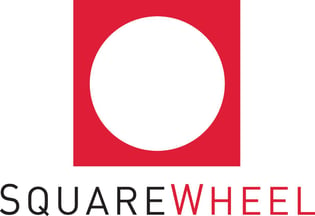We hear it all of the time from startups, SMBs, and leaders at high-growth companies. And it usually goes something like this:
"I know who I need need to be talking to, it's just when, where and how that leaves us guessing."
At the most basic level, they're concerned with touching their prospects with the right message in the right place at the right time (as cost effectively as possible from an ROI perspective). And when you're thinking about all that it is possible within the 4-dimensional matrix of messages, channels, timing and relevance/context the possibilities quickly become overwhelming.
Consider HubSpot's findings from their annual State of Inbound, a survey of over 4,500 marketers. Here we can see that many new channels are being activated just when you thought that a website coupled with email and ads was a viable strategy.

When you look at the teal bars in this chart you should read in between them and see the thoughts and intentions of your competitors. Where will they be investing and where should you compete for airtime or mind share?
While that idea would take an entire eBook series to fully unpack, we can start to break this down by clearly laying out every available channel. This exercise serves to lay out all that can or should be considered. Future posts will get more into the strategy of where to invest.
So, without further ado, here it is, every available digital marketing channel and a few notes on each.
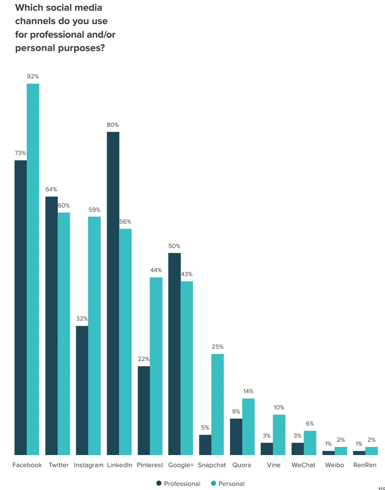
- Your Website. This is a multifunctional tool, comprised of many elements and it needs to be called out. Incorporating text, images, graphics, icons, videos, forms, interactive elements, integrations and maybe even some dynamic content, your website can be your best marketing tool and highest performing salesperson.
- Landing Pages. This critical element of your digital marketing mix ensures that your ads, offers, emails and other touch points always point back to a relevant page. It's a best practice to have a separate landing page for each offer, but most organizations can get away with using a few templates if the necessary time and resources aren't available.
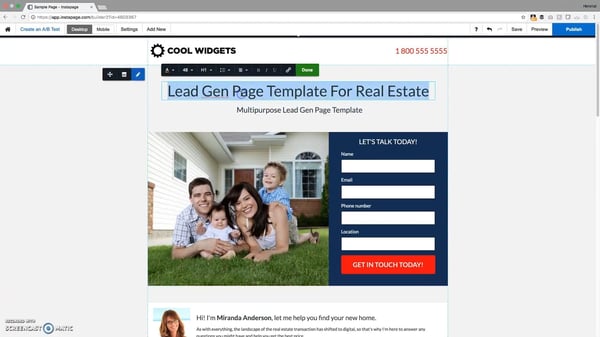
- Banner/Display Ads. They're everywhere. Whether you think that's good or bad, well I'll leave that up to you. The targeting of these ads has become very accurate and you can often associate them with existing sites and brands by buying directly from those sites. You can also use ad networks like those provided by Google and Facebook directly via a company like AdRoll.
- Search Ads. If you're just getting off the ground you'll want to run ads concurrent to your SEO development, allowing you to appear next to your competition from day 1. This can also keep you visible in searches that are highly competitive. If you focus on geographic limitations, you can cut costs and stay close to your prospects.
- Social Advertising. This is by far the most targetable approach, as the social media platforms collect rich data on their users. With a myriad of options for desired actions (subscribe, download, request, etc.) you can tailor these ads to match up perfect with existing campaigns.
- Email. From newsletters, promotional offers, to automated follow ups, there are so many ways to... overwhelm people. It's a delicate dance and for every 'best' practice there are ten credible sources telling you a different way to do it or to avoid it all together. However, it is still certainly a vibrant and productive channel despite the advent of messaging apps like Slack and Skype that were once described as potential email killers. The bottom line is this; 91% percent of American adults have an email account. Source: FiveThirtyEight.com
- Facebook. Fail videos, food porn, beautiful people, hashtags and your shady uncle's unwelcome reemergence into your life after you blocked him on another channel but forget about this one. What's not to love? In spite of it all we spend more and more time on social media for its positives; like reconnecting with old friends. And kitten videos. Oh, and puppy videos. And because of that there are over 1.9 billion social media users in The United States. While building a native following and engaging with them is becoming a thing of the past (proof here) it is still an incredible advertorial channel, if nothing else, from a B2B and B2C perspective. In fact, with the right mix of demographic segmenting and context it can be easiest to connect with the exact right person at the right time here when compared to any other channel.
- LinkedIn. Several factors build brand awareness through sponsored content, InMail, dynamic ads, display ads, and text ads. These tools will boost your content in the feed and secure and strengthen B2B connections.
- Instagram. Instagram is like Facebook's younger sister who is much better looking and receives much more attention; brands are 400% more likely to interact with you. With over 300 million active users, digital marketing success can originate from engagement to delivery of sales. With over 300 million users it's easy to get lost in the waters. When composing posts, never forget hashtags as they drive traffic to your profile. Make sure you find your influencers as influencer marketing is key to growing your following. Integrate your contacts from other channels by exporting a list of all your customer phone numbers into the CRM.
- Twitter. Just like other platforms the content you release should be relevant and valuable to your target market. You may tweet the same content but tweak the tweet, and keep that going consistently. A successful account will be a resource not an advertiser. Achieving a high success rate involves making sharing easy, leading conversations, responding to questions quickly, and scheduling tweets. Minuscule matters such as right size images, good bio, and high resolution visuals all matter. Achieving a put together look is the fist step of digital success; then following advanced tips to achieve the rest.
- YouTube. What is the number 1 engine? Good, o'l friend Google. But what is number 2? Yahoo? MSN? Joke is on you. It's actually YouTube. A platform commonly utilized for B2C digital marketing. Companies use this platform to showcase products, deliver helpful content or services, or educate the audience. This channel is the most difficult to compose strategy for.
- SnapChat. Today, 63% of users are between 13 and 24 years old. While they don't have fat wallets and bank accounts they are often ones who influence purchases and consumer decisions. Snapchat creates brand awareness, humanizes your business, and incentivizes customers. There are several free and paid advertising methods that can be implemented. The free methods include sharing behind the scenes footage, offering coupon and discounts, and telling stories. Snapchat claims that snap ads convert at a rate 5x higher then traditional banner ads. Other paid ads include snapchat sponsored lenses and snapchat geofilters. Snapchat provides a visual ability medium to promote a brand. Brands from every industry from Sour Patch Kids to General Electric, to HubSpot are using the low-cost method to establish a personal and engaging relationship.
- Medium. A blog hosting site that contains a collection of blog publishings from professionals. Aspired to be like Twitter but allows users an opportunity to create posts that are longer than 140 characters. Its unique features are: assign a specific theme, can be recommended and shared by other people and rich formatting options. It is Tumblr meets Pinterest with artfully constructed templates and heavy imagery. A great alternative "quality" platform for content. It takes a new norm where the newest stuff flows up top and follows downward; a key for successful blogging.

- Live Video Broadcasting. Broadcasting news and trends live over the Internet. Consumers will watch a live video for 20 minutes versus a pre-recorded content of 2-3 minutes. It works for two main reasons, volume and speed. Allows businesses to share lots of content while making viewers feel connected to the brand. Feeling as if they are offered an inside peek at the inner workings.
- Video Content as a Strategy. Yes, this is so important that it warrants its own bullet point. As attention spans continue to disintegrate and interest becomes even more fleeting online brands are increasingly turning to video to capture attention. Let me rephrase that; your competitors are going after your prospects mindshare using video. And if you need even more of a reason to build higher-level engagement into your strategy, consider this poll of agencies and marketers conducted during Hubspot's state of Inbound.
- Blogging. My favorite. Scream it from the digital roof tops! Blogging allows businesses to fill messages with thought-leading ideas and deliver a voice and message for the business. Fill that channel with ideas, thoughts, and strategies that are closely related to your unique value proposition. A great medium to highlight success stories like big wins, customer case studies and related materials.
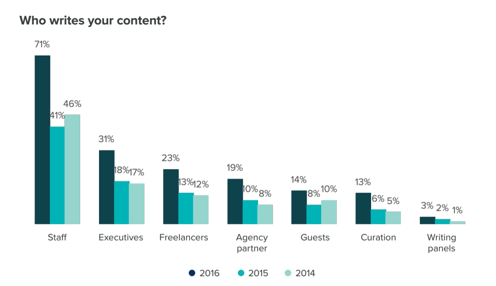
- Premium Content. Fuel the engine through premium content that includes copy, video, animations, graphics, images, and cinema-graphs. Premium content differentiates from standard free marketing through production of informative content. It includes attention grabbing resources that give something back to the consumer. They are looking for answers and you are providing a solution. Providing an answer is the ultimate touchdown and satisfaction for the consumer.
- Digital PR. PR has predominantly moved towards online channels that allows content to reach an audience instantaneously. Modern PR heavily focuses on social media and SEO. The key step is to categorize and conduct market research on social media channel platforms the target market customers use. Connect with industry leaders to stay current with relevant trends, resources, and ideas. Staying active online through social media platforms makes the company more credible and effective.
- Sponsoring and Influencers. You know you prevail when millennials can't tell the difference between sponsored content and real news articles. Sponsored content takes influencers in the industry and establishes them as the creator. The influencer should be relatable towards the audience (followers and subscribers) for effective messaging. An influencers goals should align with the brand.
- Webinars. Conferences from remote locations, otherwise known as webinars, are taking the digital marketing world by storm. Not only are they convenient, but they can help establish your credibility. They can increase brand awareness through consistent promotion, and advertisement. Webinars also allow you to set up a visual image of your brand that leads to expansion in consumer base, building a bigger audience, and contact list.
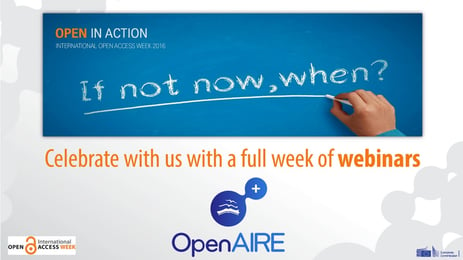
- Podcasts. Once thought to be a dying trend, is now back in business more than ever before. It's an easy way to share trends and news through smartphones. Simple podcast are great for listening on a commute, while working out, or even on the job. The content is simple, create something that your audience can benefit from such as, tips, insider knowledge, or a deeper look into products or offerings.
